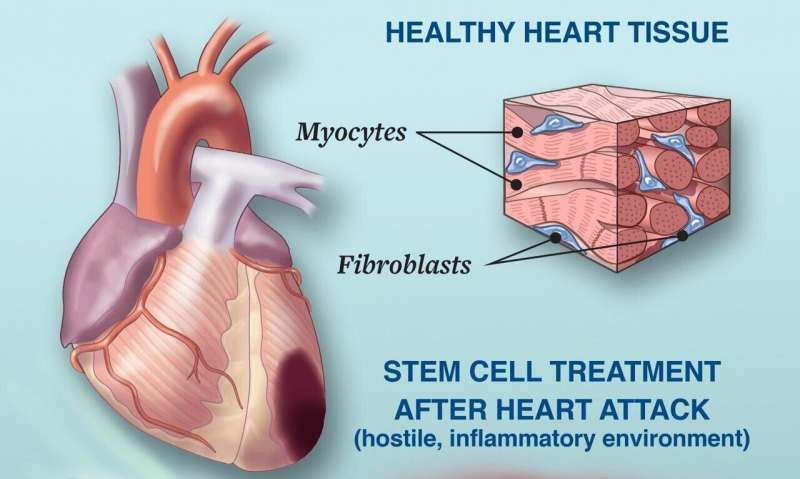Table of Contents
The authors keep in mind obstacles that remain, including raising the engraftment success and cell survival. Since the ISCI and Miller College are leaders in this field, the writers likewise emphasize the need to standardize meanings and results actions in the area. "The Hare Laboratory continues to be at the center of introducing brand-new treatments in this vital clinical domain.
Currently we are checking out just how to harness such stem cells to assist patients recover their own damaged hearts."The research is guided by the Cedars-Sinai Heart Institute, with the collaboration of the Johns Hopkins College, where Dr. Marbn functioned before signing up with Cedars-Sinai in 2007. The 24 individuals joining the research study have hearts that were damaged and marked by cardiovascular disease.

It takes about 4 weeks for the cells to increase to numbers adequate for therapeutic usage, around 10 to 25 million. In the 3rd and last step, the now-multiplied stem cells are reintroduced into the person's coronary arteries throughout a second catheter treatment. All clients in the study had to have experienced heart strikes within four weeks before enlisting in the research study project.
Later this summertime, it is prepared for that 12 even more individuals will go through treatments to obtain 25 million stem cells, while 6 extra people will certainly be kept track of as controls. The initial patient, Kenneth Milles, a 39-year-old controller for a little building and construction business in the San Fernando Valley, experienced a cardiac arrest on May 10 as a result of a 99 percent obstruction in the left former coming down artery, a major artery of the heart.
The process to grow the cardiac-derived stem cells associated with the study was established by Marbn when he was on the professors of Johns Hopkins College. The college has actually applied for a license on that copyright, and has licensed it to a firm in which Dr. Marbn has a financial rate of interest.

All financing was originated from the National Institutes of Health, the Donald W. Reynolds Foundation and Cedars-Sinai Medical Facility. Marbn holds The Mark Siegel Family Members Foundation Endowed Chair and Director of the Heart Institute.
Is stem cell therapy for Heart Disease and what patients are saying
Cardiac arrest is an intense or chronic problem that affects numerous individuals worldwide. One of the most frequently approved methods of therapy normally consist of sign monitoring and drug considered life, so the concern triggered by the condition is heavy. Stem cell treatment for heart failing has arised as a new means to treat and take care of the core of the disease.
Nevertheless, stem cell treatment can help to reduce symptoms and enhance the heart's pumping capacity. This treatment makes use of the ability of stem cells to self-regenerate and self-heal. Adhering to the admission of stem cell shots for congestive heart failure, a number of mechanisms enter play: Stem cells for cardiac arrest advertise the formation of specialized cardiac muscle mass cells and regenerate harmed tissue, enhancing the heart's pumping capability.
These are types of adult stem cells that are acquired from bone marrow, fat tissue, and skin cells. These are the most usual and well-researched types of stem cells.
These are gotten from embryos and have the pluripotent capacity to transform right into any type of sort of cells, consisting of cardiac ones. The major problem with these cells is that, as they are taken from embryos, they have many moral and lawful constraints and are only utilized in details circumstances. for the factors mentioned over.
Can stem cells help with Atherosclerosis and what patients are saying
These cells come from in the heart and are fit to heart repair service. Medical Expert, Swiss Medica medical professional The application and treatment of stem cell treatment is composed of 5 steps: Patients start with an on the internet assessment with our medical expert and are then reviewed by a cardiologist, who will obtain the necessary clinical background, perform blood tests, and demand imaging studies to determine whether stem cell therapy for heart failing is a feasible alternative.
We administer stem cells through painless stem cell injections for heart disease. A very trained medical professional will infuse processed stem cells right into the bloodstream; the whole procedure takes much less than an hour. After ending up the heart disease stem cell treatment procedures, our clients will certainly be kept an eye on for any complications and outcomes.
Navigation
Latest Posts
Is stem cell therapy for Atherosclerosis — what the science says
Does stem cell therapy support Arrhythmias explained
New hope for Arrhythmias with stem cell therapy